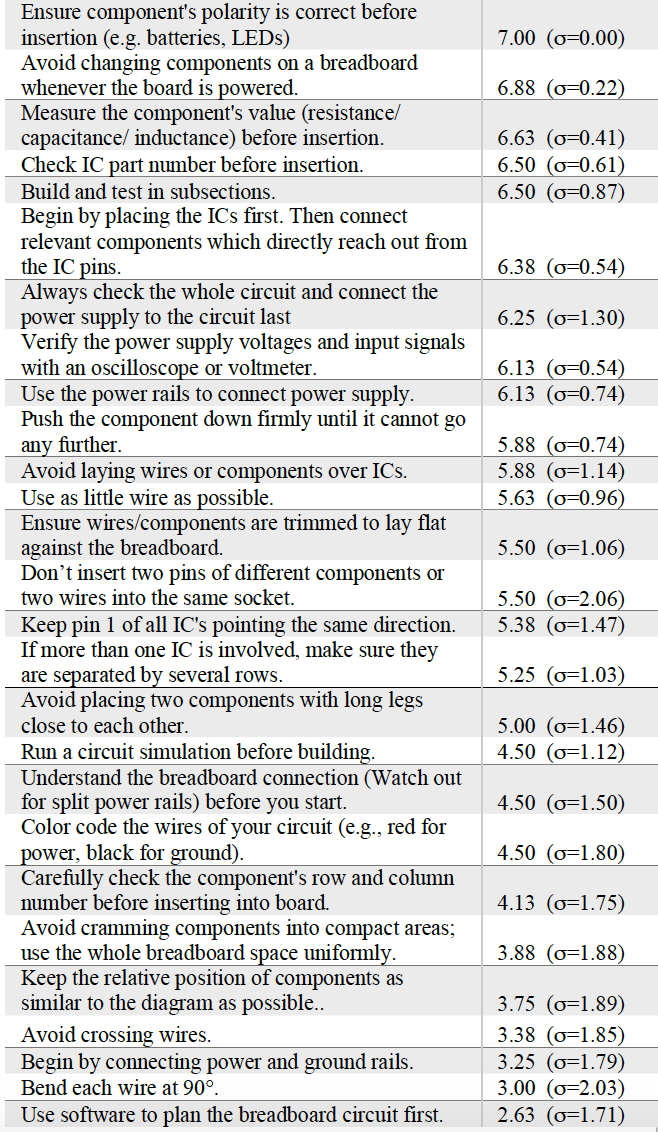CircuitStyle: A System for Peripherally Reinforcing Best Practices in Hardware Computing
Jun Gong*, Josh Urban Davis*, Yunxin Sun, Parmit Chilana, Xing-Dong Yang (* co-primary authors) ACM Symposium on User Interface Software and Technology (UIST), 2019 [PDF] [Video]
Motivation
In breadboard circuit prototyping, circuit style (akin to coding style in programming) refers to a set of rules that uniforms the appearance and construction process of a breadboard circuit to make it readable, understandable, and maintainable. Examples of good circuit style behaviors include avoiding crossed wires while prototyping, using as little wire as possible, and checking the polarity of components before insertion. Practicing good circuit style behaviors results in breadboard circuits that are less error-prone, easier to debug, and easier to share.
Traditionally, breadboard circuit style has only been taught in universities or colleges to students pursuing a degree in electronics or related fields. However, increasingly, many novice and untrained users, such as in maker communities, are experimenting with breadboard prototyping on their own to incorporate electronics into art projects. In addition, the formal education backgrounds of high school electronics teachers, maker instructors, and workshop facilitators has also broadened beyond the traditional background of electronic engineering. Unfortunately, the majority of tutorials and teaching materials available to these new learners and instructors consists of lessons on traditional electronics prototyping and focuses less enforcing appropriate circuit styles.
Formative Study
We devised a semi-structured interview protocol and recruited 5 instructors who taught electronics prototyping at various institutions including formal primary education classrooms, makerspace workshops, and higher education. We examined common teaching tools used, difficulties instructors faced when facilitating in-person circuit tutorials, and common style behaviors they repeatedly reinforced to their students. We also presented the instructors with a list of potential stylistic choices for hardware computing and asked the instructors to rank their importance on a 7-point Likert scale. The results are shown below.

Table. Compiled list of circuit styles aggregated from instructor interviews with average importance score associated with each style.